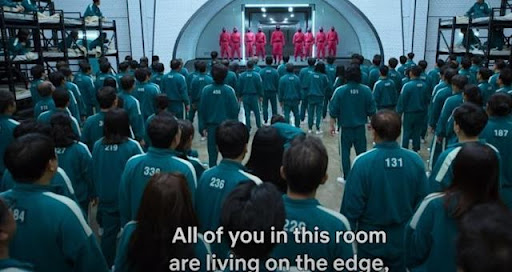Sub vs. Dub
The International Debate of Media Consumption
October 27, 2021
Sitting in the comfort of their own homes, streaming users can watch movies and TV shows made anywhere in the world. There are so many options, from the Telenovellas of Mexico to the Anime of Japan. With the rise of streaming services more and more people have access to foreign media.
While access to these works have gone up, one major obstacle still stands between the average American viewer and these wealths of entertainment; almost none of them were produced in english. This is where the great debate of Sub vs. Dub enters.
“There are almost three interpretations for each of the shows,” Mr. Anderson, Algebra II and AP Statistics teacher, said. “The original language, the english subtitles, and the english dub. Allowing character integrity to be further built or destroyed with each interpretation.”

Subs are the inch tall translations that can be found on most streaming services, the more technical term would be Subtitles. These subtitles can be made by anyone in the chain from filming to streaming, from the initial production company to the app on your phone. They tend to be a more direct translation of the work and many viewers prefer this experience.
“The sub is just better,” senior Sean Ochiai said. ”It tends to be closer to the original, intended message of the show.”
This being said, in order to watch with subtitles viewers have to give their undivided attention to the experience. Watching the screen for both the movement of characters and reading the swiftly moving subtitles can be difficult without practice and a dedicated time to do so.
“I enjoy watching my TV and not having to focus on my TV,” senior Ana Krayer said. “When I have to use the subtitles I have to constantly watch the TV screen in order to read it and understand it.”
Then comes the other sides of the debate: Dubs. This is when another set of voice actors are edited over the initial visuals. This allows for viewers to understand the characters without the need of reading subtitles. Many prefer this because it allows for the enjoyment of the media without the dedicated time required by subtitles.
“When I’m cleaning the house, I like to throw on a show,” Mr. Anderson said. “Then I have to specifically seek out dubbed shows to watch.”
The problem that often arises with dubs is the quality. Lips don’t always match, meaning can be lost, and quality of voice acting can vary wildly. These quality variations can turn many viewers to subtitles, or even turn them away from the show as a whole.
“Certain dubs are good,” Ochiai said, “but there are a lot of very mediocre, half hearted voice acting in the english dubs when compared to the serious profession of voice acting in places like Japan.”

Whether viewers utilize Subtitles or rely on the Dubs, enjoying the art of international media is taking on a larger part of the entertainment industry. Americans are taking in these new stories with stride and embracing these parts of other cultures. This only opens the door to a more global community and understanding of one another.
“A lot of what is being said has a deep emotional connection,” Mr. Anderson said. “These emotional depths should be explored throughout the world.”

